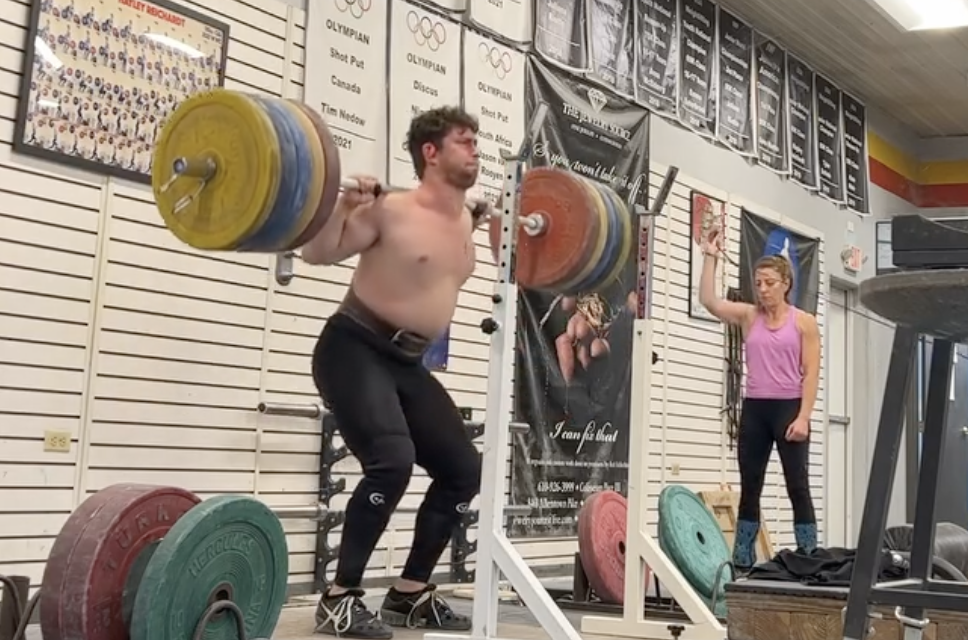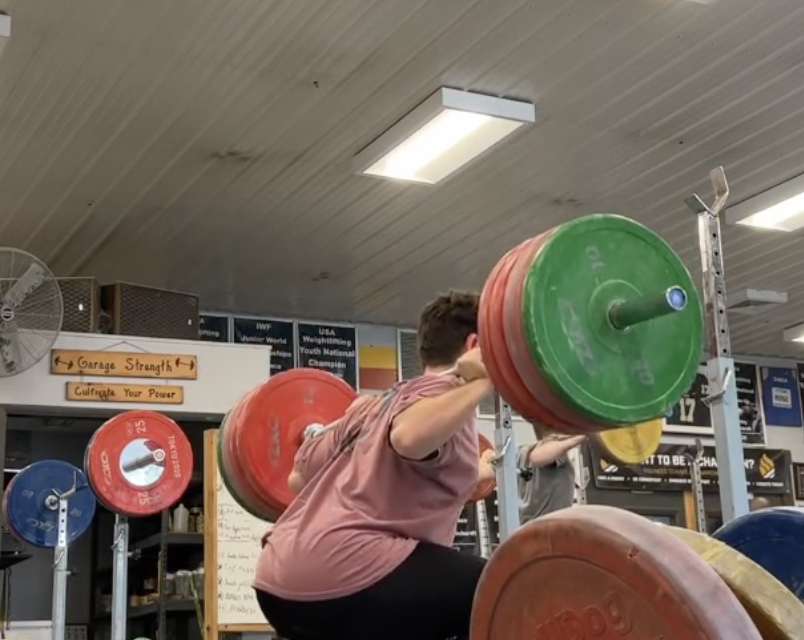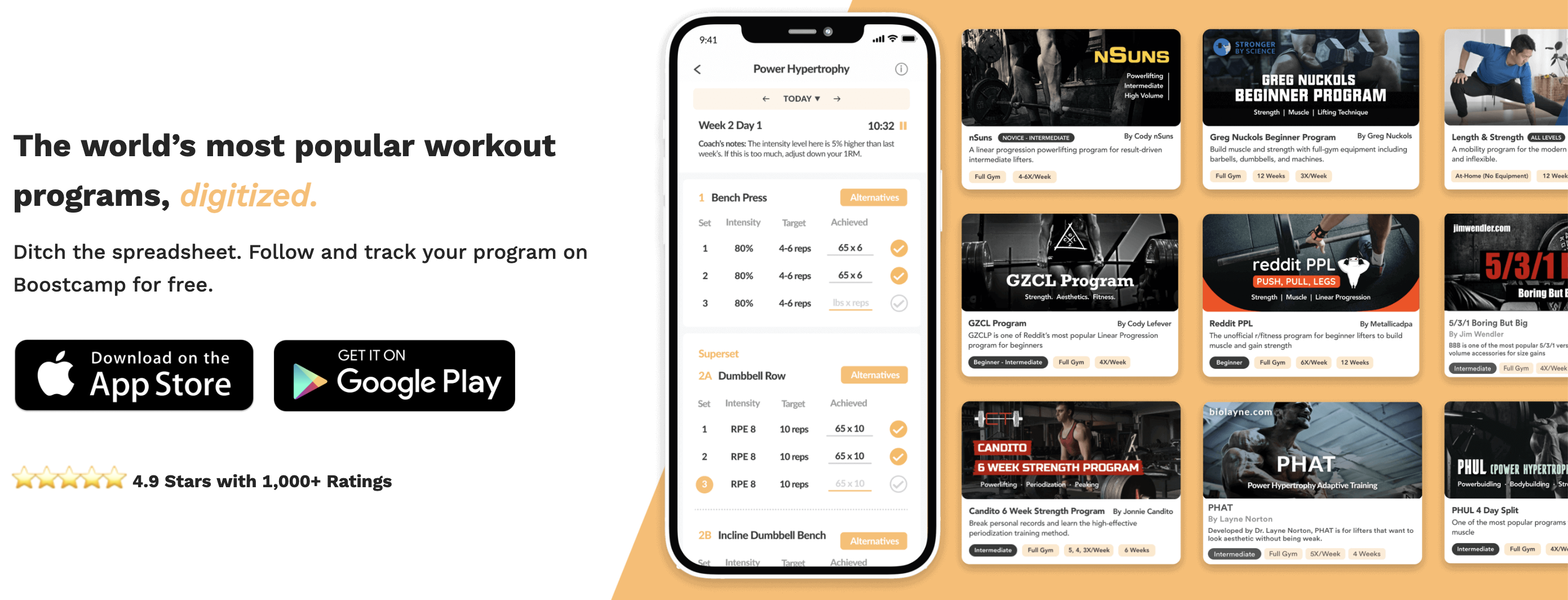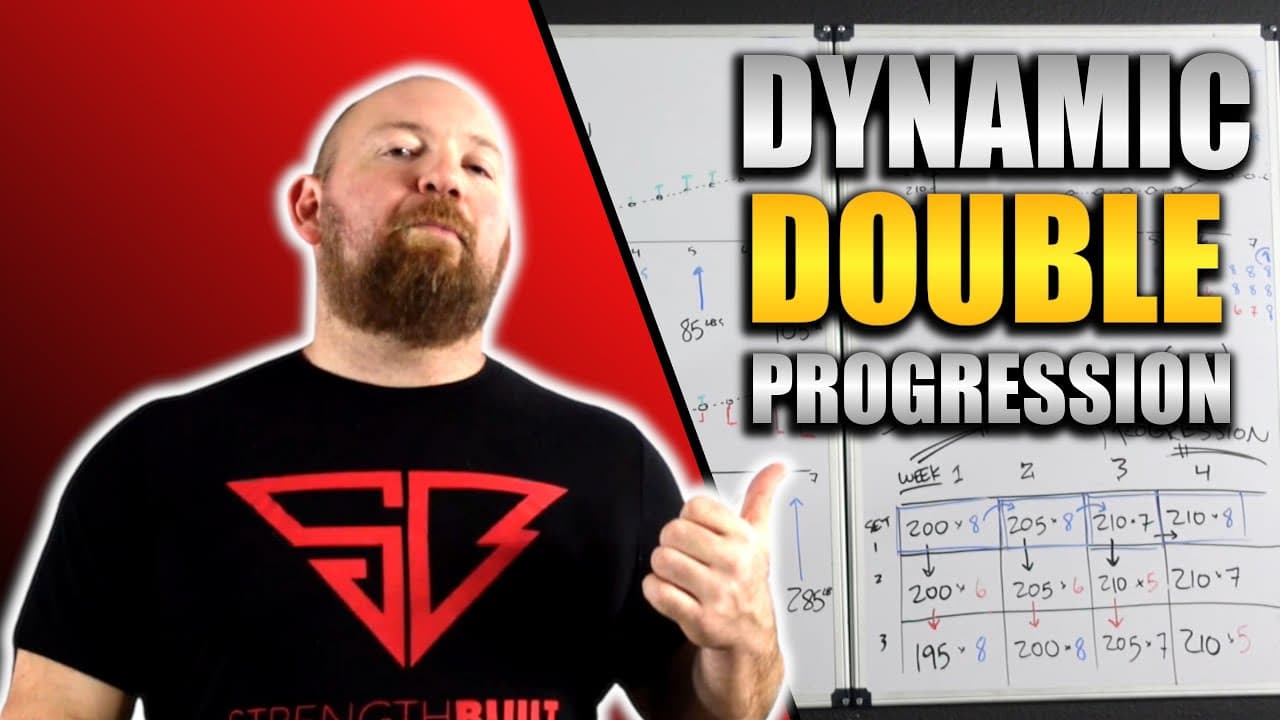Master Weight Training Progression for Maximum Strength
Written by The Boostcamp Editors
Master Weight Training Progression: Maximize Strength
Progression methods are a part of any effective workout program. Linear progression? Wave progression? Double progression? Wave Progression? Step Loading? Choosing the right progression helps you optimize workouts, break through plateaus, and hit new personal records and awesome one rep maxes within an optimal time frame. Whether you are training for hypertrophy with the goal of bodybuilding or looking to excel in a strength sport like powerlifting, having a good progression method is key. This comprehensive guide will explore various weight training progression methods, what they are, their pros and cons, and how you can use them to maximize your results.
Let's be clear, there is no perfect progression method; that depends on your current level, experience, and goals. It is also important to note that workout programs may employ different progression schemes for different exercises. Understand each progression and use them as tools in your lifter’s toolbox.
Now let’s get into the different weight training progression methods!
Linear Progression Overview

Let's break down all things involving linear progression.
What is Linear Progression?
Linear Progression is the most straightforward and simplest method of increasing the weight in a training program. You consistently add a small amount of weight to the bar every session or week as you progress, following the principle of progression from a granular to global scale. This method works well for beginners as it allows them to develop a solid strength base while continuously making progress in different ways. However, maintaining constant progress with linear progression becomes challenging as you advance, making it important to consider the bigger picture of your entire workout routine.
Linear Progression Example
Starting with a 100 lbs squat, add 5 lbs per week, so the progression would look like this:
Week 1: 100 lbs
Week 2: 105 lbs
Week 3: 110 lbs
Week 4: 115 lbs
Pros
Simple and easy to follow, ideal for beginners.
Steady, predictable increases in weight.
Builds a strong foundation in strength and muscle mass.
Cons
Progress may stall quickly, especially for intermediate and advanced lifters.
Lack of variety may lead to boredom or burnout.
Not optimal for targeting specific weaknesses or addressing individual needs.
Best Linear Progression Programs (free)
r/fitness Basic Beginner Routine: proven 3x5 routine made by the r/fitness community
Phrak’s Greyskull LP: Beginner split with a good balance of push and pull movements.
GZCL Program: Cody Lefever’s famous linear progression program for gym beginners
nSuns 531: the most popular intermediate powerbuilding programs on the internet
Reddit PPL: Push pull legs hypertrophy program for novice and intermediate lifters
Wave Progression
The next type of progression to discuss is Wave Progression.
What is Wave Progression?
Wave Progression is a more advanced method of organizing training loads, where you cycle through periods of increasing and decreasing intensity of your workout within a training cycle. This method helps vary the intensity and volume over time, allowing for periods of higher loads followed by lighter loads to facilitate recovery and adaptation. Wave progression is particularly useful for intermediate and advanced lifters who may have plateaued with linear progression, as it helps break through training plateaus and manage fatigue on rest days.
Wave Progression Example:
3 week wave progression cycle example:
Week 1: 3 sets of 8 reps at 70% of 1RM
Week 2: 3 sets of 6 reps at 80% of 1RM
Week 3: 3 sets of 4 reps at 90% of 1RM
Week 4: Deload week or repeat the cycle with adjusted weights
Pros
Allows for better recovery by cycling through periods of lighter and heavier weights.
Helps prevent plateaus by avoiding consistent weight increases.
May lead to more long-term progress due to better stress management.
Cons
More complex than linear progression.
May require more time to see significant improvements.
Not ideal for complete beginners.
Best programs with wave loading progressions (free)
Candito 6-Week Strength: Break PRs with this intense and fun 6-week powerlifting split
TSA Beginner Approach: powerlifting program made by champion Bryce Lewis
TSA Intermediate Approach: powerlifting program made by champion Bryce Lewis
5/3/1 for Beginners: Wendler’s famous 5/3/1 strength training philosophy for beginners
5/3/1 Boring But Big: Popular 5/3/1 variation to build strength and size for intermediates
Double Progression

What is Double Progression?
Double Progression is a method in which you first increase the number of reps within a specific rep range before increasing the weight. Once you reach the upper limit of the rep range, you increase the weight and start again at the lower end of the rep range. This allows you to progress in both volume and intensity over time and continue to improve each next time you perform the exercise, hitting your target number of reps and sets.
Double Progression Example
If your rep range goal is 6-8 reps, and you are bench pressing 150 lbs for 3 sets of 6 reps:
Session 1: 3 sets x 6 reps @ 150 lbs
Session 2: 3 sets x 7 reps @ 150 lbs
Session 3: 3 sets x 8 reps @ 150 lbs (target reached)
Session 4: 3 sets x 6 reps @ 155 lbs (increase weight)
Pros
Encourages both strength and endurance improvements.
Good for targeting specific weaknesses or sticking points.
Can help lifters push through plateaus.
Cons
More complex than linear progression.
May require more time and effort to track progress.
May not be suitable for complete beginners.
Best Programs With Double Progression (free)
Novice Bodybuilding Program: program from The Muscle and Strength Pyramid book
Intermediate Bodybuilding Program: also from The Muscle and Strength Pyramid book
Alberto Nunez Upper Lower Split: intermediate bodybuilding program by Mr. Universe
Rampage: 3x/week novice hypertrophy program by Geoff Verity Schofield
Ravage: 6x/week intermediate hypertrophy program by Geoff Verity Schofield
Step Loading
What is Step Loading?
Step Loading is another progression method involving increasing the load in a stepped manner. In this approach, you maintain the same weight for a specified number of sessions or weeks of training before increasing the load, while also incorporating proper rest periods and rep schemes. This method allows for more recovery and adaptation time before increasing the load and is particularly useful for advanced lifters who require more time to adapt to the heavier loads.
Step Loading Example:
In step loading, you could maintain the same weight for three weeks, followed by a weight increase on the fourth week. For example:
Week 1-3: 3 sets x 5 reps @ 200 lbs
Week 4 (deload): 3 sets x 5 reps @ 180 lbs
Week 5-7: 3 sets x 5 reps @ 210 lbs
Pros
Controlled, gradual increases in weight over time.
Allows for adequate recovery between sessions.
May be more suitable for intermediate and advanced lifters.
Cons
Slower progress than linear progression.
Less effective for beginners who can progress more quickly.
May require more patience and dedication.
RPE-Based Training
What is RPE-based training?
RPE (Rating of Perceived Exertion) is a subjective measure of training intensity. RPE-based progression involves adjusting training loads based on how difficult a set feels rather than following a strict percentage-based program. This method allows for more flexibility and individualization in training, accounting for daily fluctuations in performance and recovery
RPE Training Example
Here's an example of an RPE-based training program for the squat exercise:
Day 1: Squat
3 sets of 5 reps at RPE 7
2 sets of 8 reps at RPE 6
Day 2: Squat
4 sets of 4 reps at RPE 8
3 sets of 6 reps at RPE 7
Pros
Allows for more individualized training based on personal feedback.
Adapts to daily fluctuations in performance and recovery.
Can lead to more sustainable long-term progress.
Cons
Requires accurate self-assessment and monitoring.
More subjective than other methods, making tracking progress more challenging.
May not be suitable for complete beginners.
Best programs with RPE-based progression (free)
Novice Bodybuilding Program: program from The Muscle and Strength Pyramid book
Intermediate Bodybuilding Program: also from The Muscle and Strength Pyramid book
Alberto Nunez Upper Lower Split: intermediate bodybuilding program by Mr. Universe
Rampage: 3x/week novice hypertrophy program by Geoff Verity Schofield
Ravage: 6x/week intermediate hypertrophy program by Geoff Verity Schofield
Undulating Periodization
What is Undulating Periodization?
Undulating Periodization involves changing the training variables, such as intensity, volume, or exercise selection, on a daily or weekly basis. This method helps prevent stagnation and keeps the training stimulus fresh, making it a popular choice for intermediate to advanced lifters.
Undulating Periodization Example
A weekly undulating periodization program could look like this:
Monday: 4 sets x 6 reps @ 70% of 1RM
Wednesday: 3 sets x 8 reps @ 60% of 1RM
Friday: 5 sets x 4 reps @ 80% of 1RM
Pros
Provides variety in training, reducing boredom and burnout.
More effective for addressing specific weaknesses.
Can lead to better long-term progress.
Cons
More complex than linear progression.
Requires careful planning and monitoring.
Not ideal for complete beginners.
Block Periodization
What is Block Periodization?
Block Periodization divides the training program into distinct blocks or phases, each with specific goals and training variables. Each block focuses on developing particular aspects of fitness, such as strength, hypertrophy, or power, and builds upon the progress made in the previous block.
Block Periodization Example
A block periodization program could be divided into 3 distinct blocks:
Block 1 (4 weeks): Hypertrophy - 4 sets of 10-12 reps at 65-75% of 1RM
Block 2 (4 weeks): Strength - 5 sets of 5-6 reps at 80-85% of 1RM
Block 3 (4 weeks): Power - 6 sets of 3-4 reps at 90-95% of 1RM
Pros
Focuses on specific training goals within each block.
Can lead to greater long-term progress.
Allows for better recovery and stress management.
Cons
More complex than linear progression.
Requires long-term planning and commitment.
May not be suitable for beginners.
Best Programs with Block Periodization (free)
KONG: 12-week program with 3 blocks to build savage size by Alex Bromley
Bullmastiff: 19-week program with a base phase and peak phase by Alex Bromley
Auto-Regulation
What is Auto-Regulation?
Auto-regulation is an advanced progression method that involves adjusting training variables (such as load, volume, or exercise selection) based on your performance, recovery, and readiness on a given day. This method promotes long-term progress by optimizing the
Example of Auto-Regulated Training
Day 1: Feeling weak due to poor sleep
Do workout with less intensity and volume to recover better
Day 2: Feeling strong due to a lighter day 1
Do workout with higher intensity and volume
Day 3: Feeling strong again due to good sleep and recovery
Pros
Continue workout with higher intensity and volume
Adjusts training loads and intensity based on individual needs and recovery.
Encourages long-term progress and sustainability.
Reduces risk of injury and overtraining.
Requires good self-awareness and understanding of personal limits.
Cons
May be difficult for beginners to implement correctly.
Can be more challenging to track progress compared to more structured methods.
Conjugate Method
What is the Conjugate Method?
Popularized by Westside Barbell, the Conjugate Method involves training multiple strength qualities simultaneously by rotating exercises and manipulating training variables. This approach helps develop multiple aspects of fitness concurrently, including maximal strength, speed-strength, and hypertrophy.
Conjugate Method Example:
In a typical week, the conjugate method could look like this:
Monday: Max Effort Lower Body (squat/deadlift variation)
Tuesday: Dynamic Effort Upper Body (bench press variation with speed focus)
Thursday: Max Effort Upper Body (bench press variation)
Saturday: Dynamic Effort Lower Body (squat/deadlift variation with speed focus)
Pros
Addresses multiple aspects of strength and conditioning simultaneously.
Encourages constant adaptation and progress.
Can target specific weaknesses and sticking points.
Highly complex, requiring a deep understanding of training principles.
Cons
Not suitable for beginners.
May be time-consuming and require more equipment.
Where to Find Programs
When looking for a program to use different progression routines, you can surely get a cookie cutter program off of the internet. However, you can choose from countless good programs available on Boostcamp to find or build your workout routine and help you make progress with your goals such as cutting or bulking or maingaining. A good program will keep you on track, making sure that you are making the most gains and maximizing your time in the gym. If you are looking to stay on track and continue with linear progression, then finding a good workout program is the key.
There are over 50 free workout programs on Boostcamp that help with strength, hypertrophy, or functional fitness, or both, from the push pull legs program all the way to upper lower, there are so many programs to choose from that can help fit your needs. However, you don’t have to just follow a pre-written program (although each program is written by a professional), but Boostcamp allows you to create your own program as well, and track your progress to make sure you are on the right track. That being said, when you are looking to incorporate some serious training to further your progress with RPE and percentage based training, then check out Boostcamp.
Conclusion
These are just a few of the most popular progression methods available in weight training. It's essential to experiment with different methods and find the one that works best for your individual needs and goals, as well as to adjust your approach as you progress and adapt to new challenges.
Looking for the most popular and proven workout programs that incorporate some of these progression principles? Check out the Boostcamp App for some great programs. Also, be sure to follow Boostcamp on Instagram and subscribe on YouTube!


